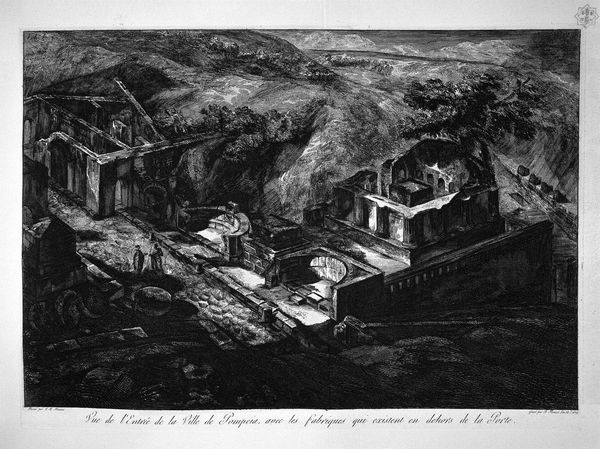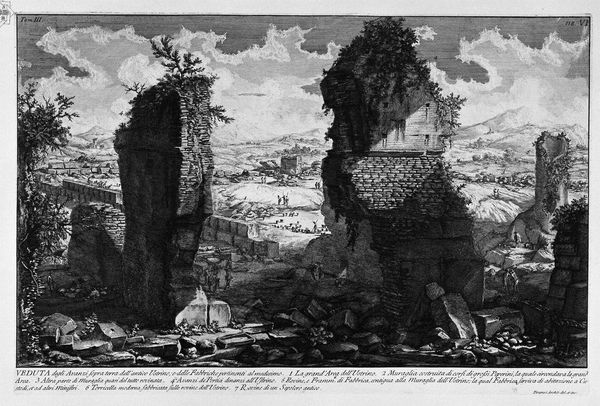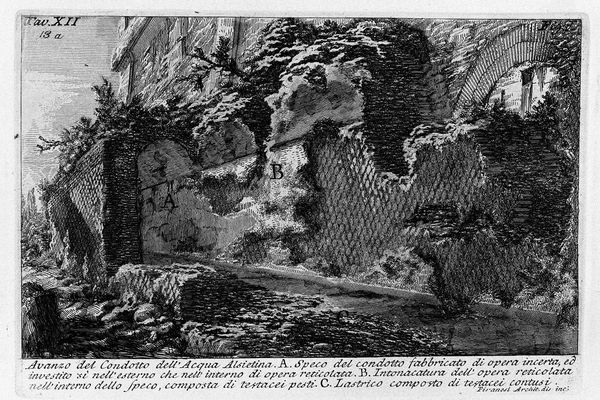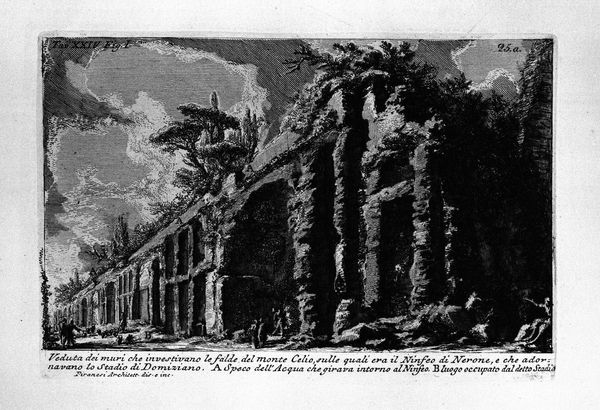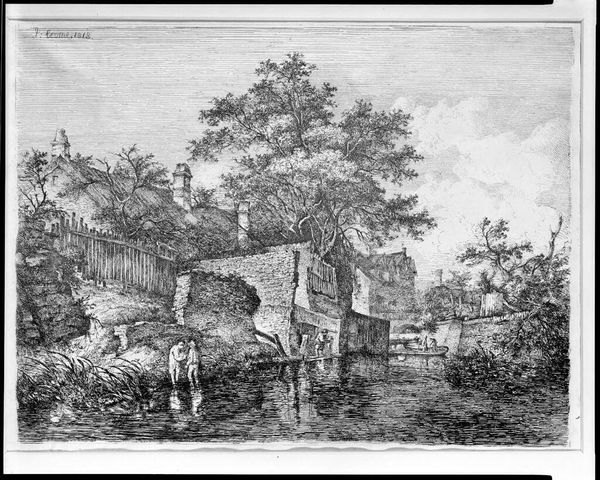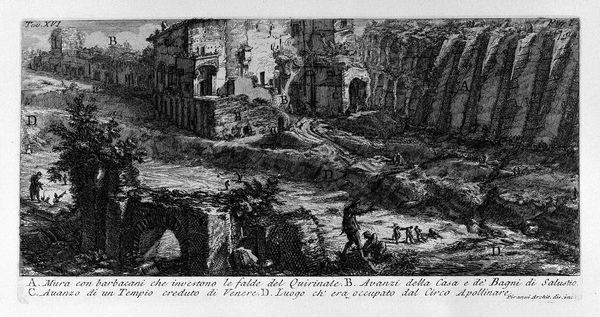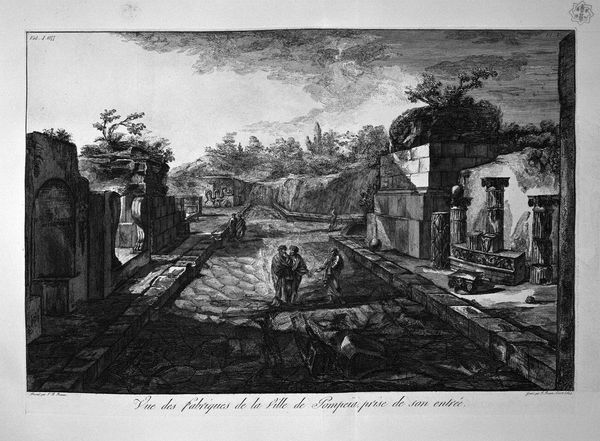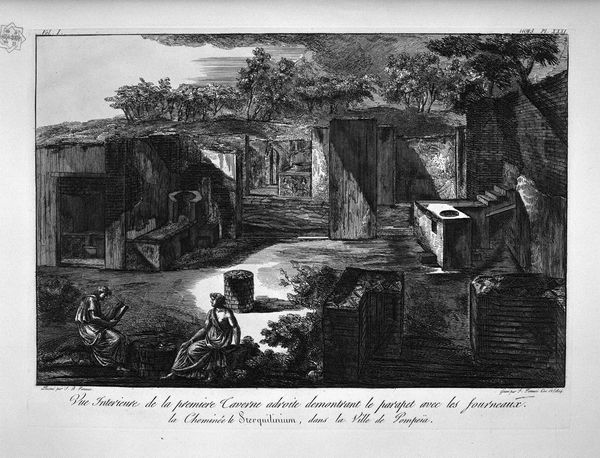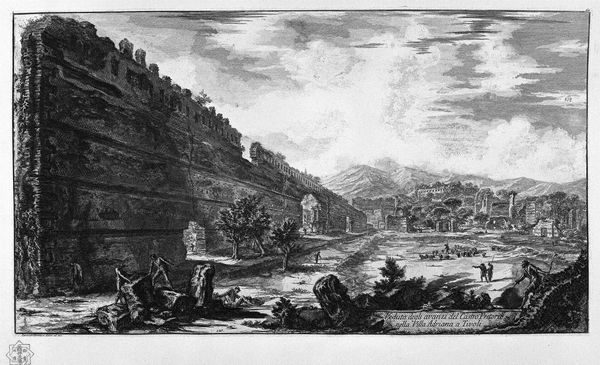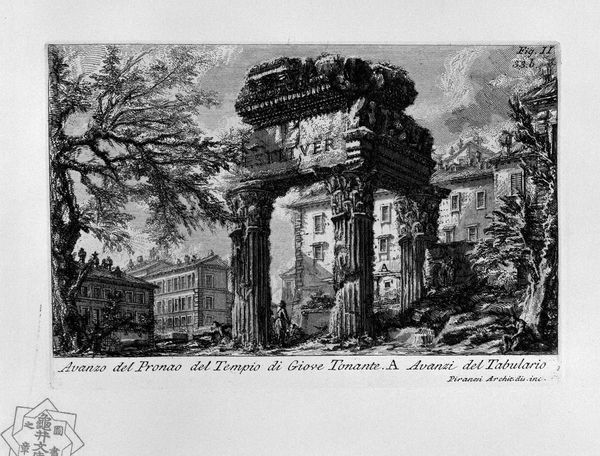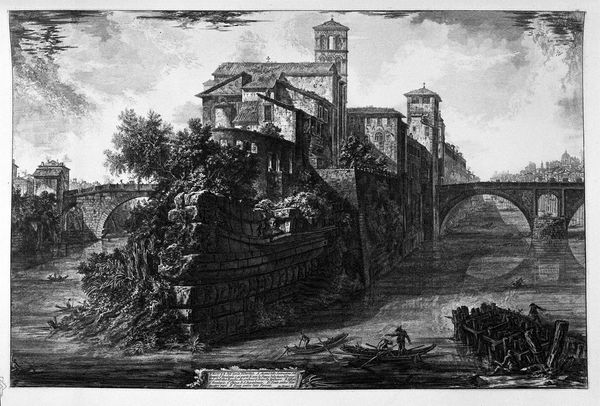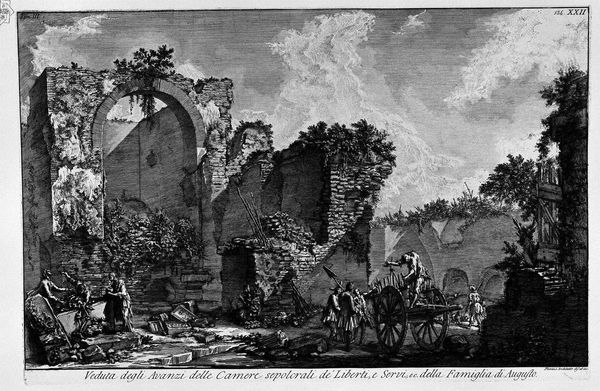
print, etching, engraving, architecture
#
tree
# print
#
etching
#
landscape
#
house
#
perspective
#
form
#
romanesque
#
ancient-mediterranean
#
line
#
cityscape
#
history-painting
#
engraving
#
architecture
#
realism
#
building
Copyright: Public domain
This is an etching of the Aventine Hill in Rome, made by Giovanni Battista Piranesi in the mid-18th century. The image shows a picturesque ruin, a fragment of ancient Roman infrastructure overgrown with vegetation. Piranesi's prints were not just documentation; they were powerful statements about the relationship between past and present, and about Rome’s place in the European imagination. This was a time when the "Grand Tour" was fashionable among wealthy Europeans, who travelled to Italy to experience classical culture. Piranesi's prints provided them with readily available souvenirs, shaping their understanding of Roman history and architecture. Piranesi was deeply concerned with the state of Rome in his time. He saw the neglect of its ancient monuments as a sign of cultural decline. His prints can be seen as a call to action, urging viewers to appreciate and preserve the city's heritage. Art historians consult guidebooks, travel journals, and architectural treatises to understand this complex cultural moment better. The meaning of Piranesi’s work is therefore always contingent on its historical context.
Comments
No comments
Be the first to comment and join the conversation on the ultimate creative platform.
